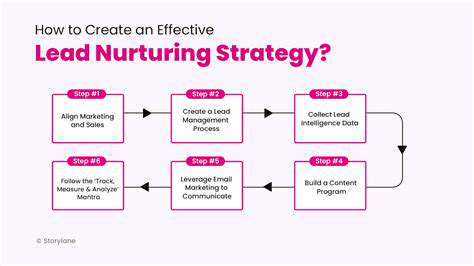Responsive Design for Seamless User Experience
Universal Accessibility
Truly effective design transcends visual appeal, ensuring access for all users regardless of ability. Thoughtful implementation of semantic structure, ARIA landmarks, and meaningful alt text creates inclusive experiences. These considerations don't just accommodate disabilities - they elevate usability for every visitor.
Keyboard operability deserves particular attention. When navigation flows logically via tab keys and all interactive elements remain reachable, we remove unnecessary barriers to engagement.
Performance Optimization
Modern users abandon sites that fail to load within seconds. Strategic responsive implementation dramatically improves speed metrics. Proper image compression, intelligent asset delivery, and lean code architecture combine to create satisfying experiences, particularly on cellular networks.
Frontend optimization techniques like tree-shaking and code-splitting yield measurable improvements. These technical refinements often determine whether users complete their journeys or bounce to competitors.
Consistent Cross-Device Experiences
Seamless transitions between devices represent the hallmark of professional design. When interfaces maintain intuitive operation whether viewed on smartwatch or desktop, we build user trust and satisfaction. This consistency requires meticulous attention to breakpoint behavior and interaction patterns.
Orientation changes present unique challenges. Well-crafted designs reflow content gracefully when users rotate devices, maintaining context and functionality.
Intelligent Navigation Systems
Adaptive menus that reconfigure based on available space demonstrate thoughtful responsive execution. Progressive disclosure patterns help mobile users focus while preserving access to secondary content. These navigational adaptations should feel organic rather than compromised.
The Mobile-Centric Mindset
Adopting a mobile-first philosophy forces prioritization of core content and functionality. Beginning with constrained dimensions yields cleaner architectures that scale elegantly to larger viewports. This approach naturally eliminates unnecessary elements that often creep into desktop-centric designs.
The discipline of mobile-first development frequently reveals opportunities to streamline workflows and simplify user journeys across all platforms.
Mobile-First Approach: Prioritizing the Mobile User

Principles of Mobile-Centric Design
The mobile-first methodology begins by solving for constrained environments before addressing expansive displays. This constraint-driven approach yields inherently focused interfaces that serve users better on all devices. The resulting designs typically exhibit cleaner information architecture and clearer content hierarchy.
Designing for touch input first creates more forgiving interaction models that translate well to other input methods. This foundational approach prevents the awkward adaptations common in desktop-first projects.
Mobile Performance Essentials
Speed remains the most crucial mobile UX factor. Strategic asset loading, intelligent caching policies, and modern image formats collectively shave critical seconds off load times. These optimizations directly impact conversion rates and user satisfaction metrics.
Edge computing solutions like CDNs dramatically improve perceived performance. Distributed content delivery ensures quick responses regardless of user location or network quality.
Responsive Implementation Techniques
Modern CSS features like Grid and Flexbox enable sophisticated responsive behaviors with minimal code. These layout systems allow content to reflow organically while maintaining design integrity across breakpoints. Combined with relative units, they create truly fluid experiences.
Art direction for responsive images ensures visual impact regardless of viewport size. The picture element and srcset attributes provide precise control over asset delivery.
UX Fundamentals for Small Screens
Mobile interfaces demand particular attention to ergonomics and cognitive load. Strategic placement of interactive elements, conservative information density, and unambiguous affordances create frustration-free experiences. These considerations become increasingly important as screen sizes decrease.
Inclusive Mobile Experiences
Mobile constraints naturally promote accessibility best practices. The limited real estate encourages clear visual hierarchies and simplified navigation paths that benefit all users. These forced simplifications often reveal unnecessary complexity in traditional designs.
Touch target sizing, high-contrast elements, and legible typography - all mobile essentials - simultaneously improve accessibility metrics.
Developmental Efficiency
The mobile-first workflow frequently reduces technical debt and maintenance overhead. Beginning with a minimal foundation prevents the feature creep that plagues many desktop-first projects. This streamlined approach often accelerates time-to-market while improving overall quality.
Early focus on core functionality creates natural opportunities for progressive enhancement. Additional features can be layered on thoughtfully rather than hacked into bloated architectures.
Key Considerations for Successful Responsive Design
Strategic Foundations
Effective responsive implementations begin with comprehensive audience analysis. Understanding device ecosystems, connection speeds, and interaction patterns informs intelligent design decisions. Data-driven approaches consistently outperform assumptions in creating universally effective experiences.
Content Adaptation
True responsiveness requires more than layout adjustments - it demands content strategy. Information must be structured to maintain clarity and impact regardless of display constraints. This often involves creating flexible content models that present appropriately in all contexts.
Mobile presentations may require more aggressive content prioritization, while desktop layouts can accommodate supplementary material. The core message must remain intact across all variations.
Visual Consistency
Maintaining brand identity across devices requires careful style management. Design tokens and systematic approaches ensure typography, color, and spacing remain cohesive. These visual systems create recognizable experiences while allowing necessary adaptation.
Technical Execution
Modern tooling significantly simplifies responsive development. CSS frameworks, design systems, and automated testing tools help maintain quality across breakpoints. Strategic use of progressive enhancement ensures compatibility while leveraging modern capabilities where available.
User-Centric Validation
Rigorous testing across real devices remains essential. Observing actual users navigating responsive implementations reveals insights no lab test can match. These real-world observations should continuously inform refinements.
Performance Culture
Responsive solutions must prioritize speed alongside flexibility. Performance budgets and continuous monitoring prevent feature creep from degrading critical user experiences. This discipline ensures technical decisions align with business objectives.
Universal Access
Truly responsive design embraces all users. WCAG compliance shouldn't be an afterthought - it's a fundamental requirement. Accessible patterns benefit all users while fulfilling ethical and legal obligations. This inclusive mindset separates professional work from amateur attempts.
Read more about Responsive Design for Seamless User Experience
Hot Recommendations
- Senior Travel Discounts and Deals
- Personalized Travel for Different Seasons and Climates
- Honeymoon Destinations: Romantic Getaways for Newlyweds
- Mythical Places: Journeys to Legendary Locales
- The Future of Travel Agents in an Automated World
- Sustainable Design for Tourist Infrastructure
- Combatting Illegal Wildlife Trade Through Travel Awareness
- The Best Beaches for Relaxation and Sunbathing
- Marine Conservation: Diving into Responsible Ocean Travel
- Measuring the Social Impact of Tourism











